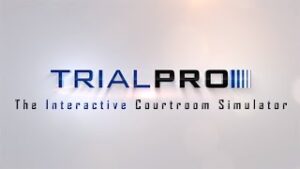Introduction to Legal Services Lesson Plans
Introduction to Legal Services (ILS) Course
The ILS course is the Introduction course for a LS pathway.
To learn more about LAPSEN Courses and Standards – Click Here
Be sure to review the entire course standards first – Click Here
Industry Recognized Credential for this pathway (taken the third course – Civil Law) – Click Here
DO NOT SHARE ANY OF THIS CONTENT WITH STUDENTS!
Make a copy for your own use.
Once you have your own copy, you can modify assignments that can be shared with students.
This is not student curriculum – these are instructor unit lesson plans.
Lesson Plans
Resources are always being added. Check back from time to time.
ALP Review Guide should be a part of every unit for all three years of the course – Click Here for the Blueprint
Literacy – with emphasis on writing and grammar – must be a key part of all units of study! Learn ways to intentionally add literacy.
Please – submit YOUR lessons and resources. Email info@lapsen.org to learn how.
The lesson plans for the legal services pathway were created, in part, from a generous grant from the
Georgia Bar Foundations’ IOLTA Grant.

Section 1: Legal Careers
|
Objective 1: Describe the various careers available in the legal field |
|
Objective 2: Demonstrate job interview skills and interview preparation steps |
Section 2: Legal Office Skills
|
Objective 1: Demonstrate basic legal research skills |
|
Objective 2: Demonstrate basic legal office skills |
|
Objective 3: Demonstrate professional collaboration and communication skills |
|
Objective 4: Describe ethical issues that arise in a legal career and how to navigate those issues |
Section 3: The US Court System
|
Objective 1: Differentiate federal courts vs state courts |
|
Objective 2: Describe the role and jurisdiction of state courts |
|
Objective 3: Describe the role and jurisdiction of federal courts |
Section 4: Introduction to Constitutional Rights
|
Objective 1: Describe important constitutional rights that apply to legal cases |
|
Objective 2: Explain how constitutional rights apply in a trial setting |
Section 5: Introduction to Civil Law and Criminal Law
|
Objective 1: Describe common criminal offenses and how they are classified |
|
Objective 2: Describe common civil causes of action and what is required to prove each |
|
Objective 3: Differentiate civil law and criminal law |
Section 6: Introduction to Pretrial
|
Objective 1: Explain the function of major hearings in the criminal pretrial process |
|
Objective 2: List and describe common pretrial events in a civil case |
|
Objective 3: Explain common pretrial motions |
Section 7: Introduction to Trials and Juries
|
Objective 1: Explain the trial process |
|
Objective 2: Explain the role and function of a jury |
|
Objective 3: Identify and describe post-trial verdict options |
Section 8: Mock Trials
|
Objective 1: Describe the mock trial process and legal documents contained in a mock trial case |
|
Objective 2: Analyze case materials to determine what information is relevant to proving a case, including a differentiation of helpful and harmful information |
|
Objective 3: Draft witness examination questions and answers using professional language and grammar |
|
Objective 4: Demonstrate substantive trial skills in an organized and professional manner |
|
Objective 5: Analyze and interpret legal documents and laws to develop legal arguments and conclusions |
|
Objective 6: Convey relevant legal information in an organized and cohesive opening statement or closing argument |
|
Objective 7: Present a well organized trial presentation that utilizes professional language and focuses on satisfying all applicable legal standards |
Section 9: Introduction to Appeals
|
Objective 1: Describe the appeals process |
|
Objective 2: Analyze and brief an appellate case |
|
Objective 3: Identify the appropriate court to consider an appeal |
 Trial Pro – the Best Resource for Teaching Objections!
Trial Pro – the Best Resource for Teaching Objections!
Trial Pro works with LAPSEN LS Programs to offer their Trial Pro simulator and training materials at an amazingly affordable price.